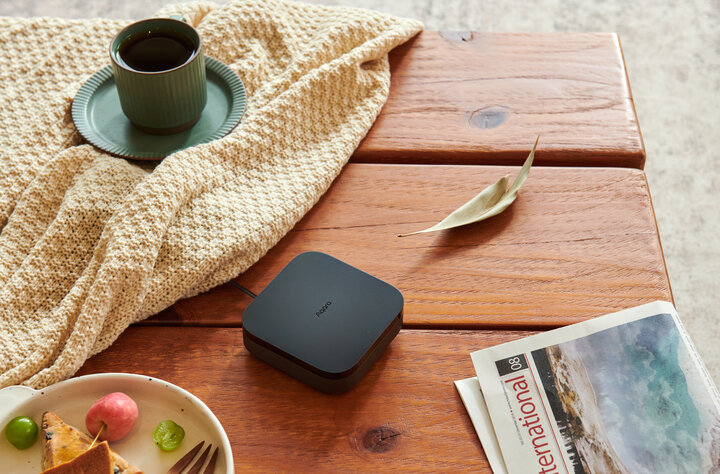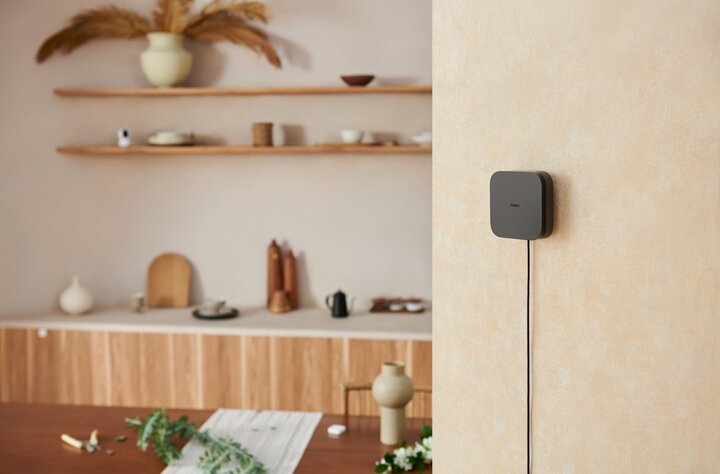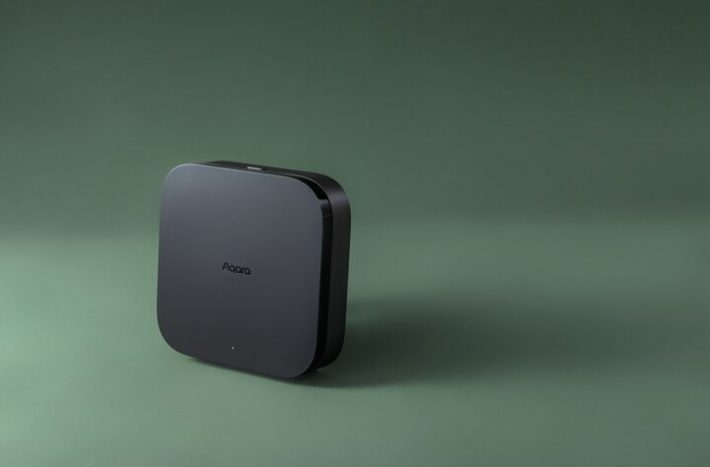With the Matter standard increasingly utilised in smart home devices, users are looking for solutions that enable simple management of devices from multiple vendors, while ensuring privacy. Filipp Shved, the senior product marketing manager of Aqara, tells IoT Now how the company’s new M3 Hub addresses the needs of the rapidly maturing market for local, private, unified smart home systems.
IoT Now: What new functionality does the M3 offer smart home users? How does it enhance user experiences?
Filipp Shved: The Hub M3 is a big milestone for Aqara and provides a significant advance on previous hubs. It is targeted at two main groups of users. The first is the vast community of Aqara Home users who are expecting improvements. We’ve addressed these user requests with the M3 and added not only support for the Thread protocol, which is the latest networking technology purposely built for IoT, but also the capability to integrate third-party Matter devices. Aqara already released two Thread-enabled devices, a door and window sensor and a motion and light sensor, and we expect a rapid expansion of our Thread lineup in the next 12 months. With the Hub M3, we can now provide a convergent experience to end users between our classic Zigbee devices and the newer Thread devices.
A further improvement the M3 delivers is in stability. The M3 is an Edge Hub with strong local automation capabilities and, right now, it is the most stable Aqara hub for our devices. Data privacy is enhanced thanks to its end-to-end encrypted, local storage. Moreover, the M3 advances its capability for local automations, minimising reliance on internet connection and cloud service. It means enhanced network stability and responsiveness for our users.
The Hub M3 was additionally designed with a second user group in mind, the third-party brand and platforms user that seeks seamless connectivity across their devices and ecosystem – whether it’s Apple Home, Alexa, Google Home or SmartThings. These users have traditionally purchased our Zigbee products, specifically for their build quality and accessible prices. For these users, the M3 serves as a Matter bridge that provides Aqara Zigbee devices the interoperability and simplicity brought by Matter, without having to make a new investment in Thread devices. In addition, the M3 also bridges the infrared AC units to Matter, allowing local control and local automation of IR devices via any platform. Last but not least, as a Thread Border Router the M3 allows owners of those older Matter controllers without Thread protocol support (such as the first-gen HomePod) to integrate Thread devices – whether from Aqara or other brands – into their smart home setups, again without the need to invest in a new Matter controller.

IoT Now: Compared to other smart home control centres on the market, what’s unique about the Hub M3?
FS: One of the biggest differences is the M3’s edge capabilities. We believe all smart home interactions should be done as locally as possible. With a growing number of connected devices in each smart home, local automation that is independent of internet connection greatly enhances the smart home network responsiveness. Furthermore, it improves privacy and data security, giving users peace of mind and control over where their data actually resides.
This is why we focused on edge capabilities when designing the Hub M3. The M3 is capable of managing over 100 Zigbee and Thread devices while managing and leading other Aqara hubs. It means that the M3 can automate hundreds of smart home devices locally on the edge, with minimum reliance on internet connection or cloud service. Our goal was to provide consumers with local network capabilities coupled with Aqara Home’s easy-to-use and powerful automation engine.
We’ve also designed the Hub M3 to be future-proof and better serve our customers as a long-term investment for their smart home. Our long-term strategy for the M3 is to make it not only adaptable to the release of future standards and protocols, but also integrate exciting new features as they are deployed. Planned features include local app control, which will allow users to connect the hub to the Aqara Home app via a local network so that they can locally control their smart home devices without an internet connection.
Last, consumer privacy is at the core of this latest Aqara hub. The M3 addresses some of the elemental privacy concerns that users have, as the hub does not have any hardware features – such as microphones or cameras – and does not push user data to the cloud

IoT Now: What challenges have you overcome as you have built the Aqara ecosystem?
FS: From day one, we’ve been challenged by not having a full product line across the various smart home categories. When consumers start to build out their smart home, they are looking for a comprehensive solution in most cases. If you don’t have smart lights, for example, you can’t offer a complete solution. For example, not having a smart light immediately detracts from the attractiveness of the purchase, so it has been difficult to convince users to switch to our ecosystem. So we’ve focused on expanding our ecosystem beyond sensors and controllers, and providing potential customers with a more robust product line, and the Hub M3 is part of that expansion.
The Hub M3 is the cornerstone of a Matter-enabled Aqara ecosystem. It ultimately facilitates the expansion of the Aqara Home experience through the integration of third-party Matter devices – elevating our overall platform experience. For example, Aqara Home users can now connect Matter-enabled Philips Hue lights and Google Nest thermostats. And there are more exciting automation capability announcements to come in 2024.

IoT Now: For what reasons have you developed the M3 for Matter devices? What’s your view of Matter and its market traction?
FS: The release of the Matter specification in late 2022 really moved the industry and raised expectations as well as really opened up extensive possibilities.
It’s taken some time to mature, but the benefits of Matter can truly be seen now. We expect that later this year Matter will start fully executing on its original vision of the interoperable home. I personally already use it a lot.
With this latest 1.3 release, we’re now navigating and addressing sustainability. Water and energy management control features are part of our future-proofing solutions and Matter makes it easier to deploy these capabilities across ecosystems, platforms and devices.
IoT Now: What are some key trends you’re seeing in the smart home market? How do these trends impact what’s next for Aqara? What developments do you see as interesting for the company?
FS: Users increasingly understand that local and private automation is how a smart home should work. Several years ago people were OK with cloud automation, but we’ve seen a growing popularity of local smart homes. User concerns about privacy, and this is addressed with Matter. While many smart home players are in the process of moving to Matter, we’ve been early backers and adopters since its early days. With Matter as the foundation, Aqara will continue to develop the ultimate smart home experience with unprecedented interoperability and simplicity.
We are very excited with the private localisation of the smart home and the value consumers are seeing in this type of investment. The Hub M3 provides a fantastic way to cement our position as the private, local smart home enabler that offers users protection and privacy coupled with adaptable features for advanced capabilities that further add to their long-term smart home investment.
Comment on this article via X: @IoTNow_










